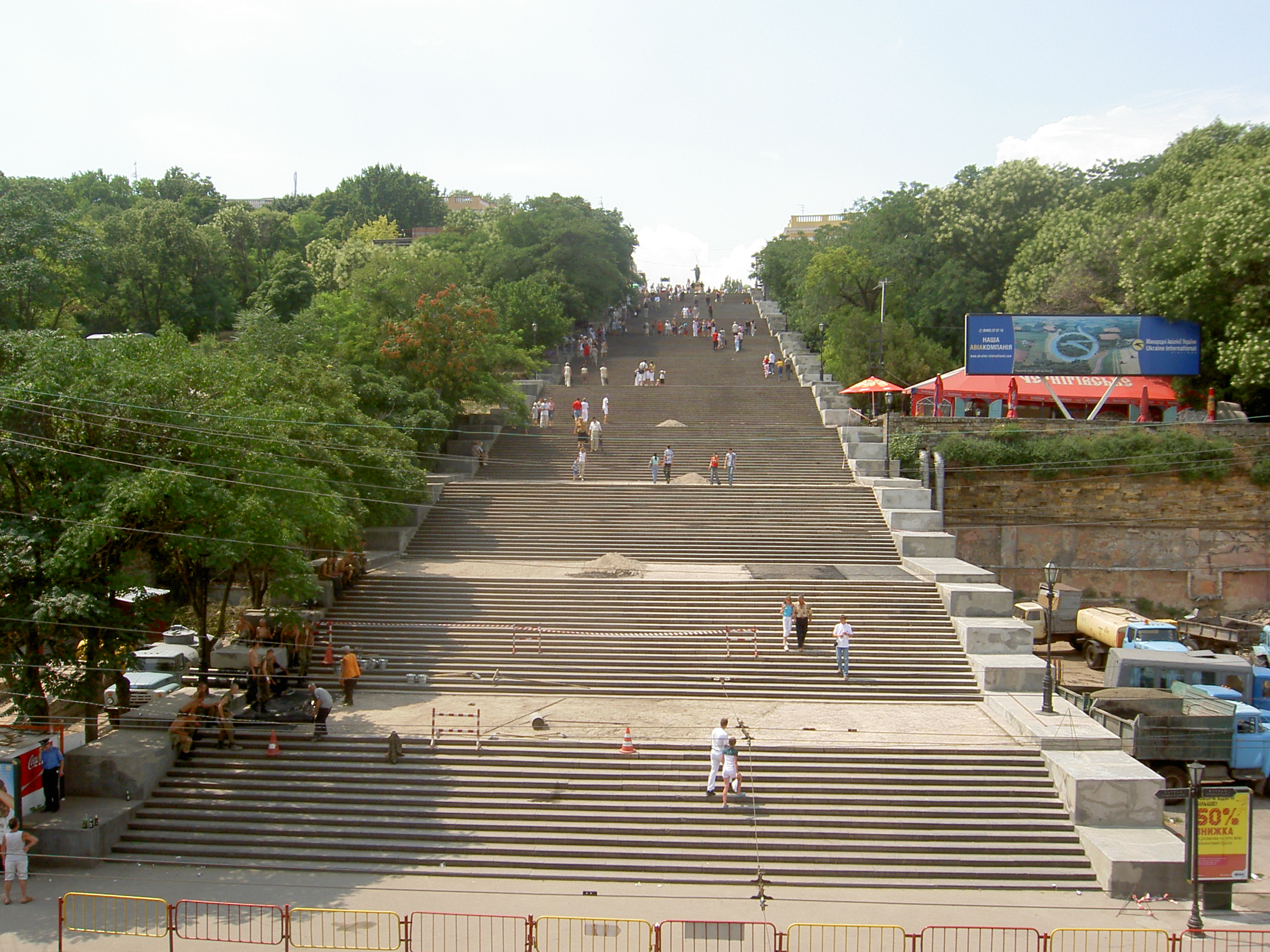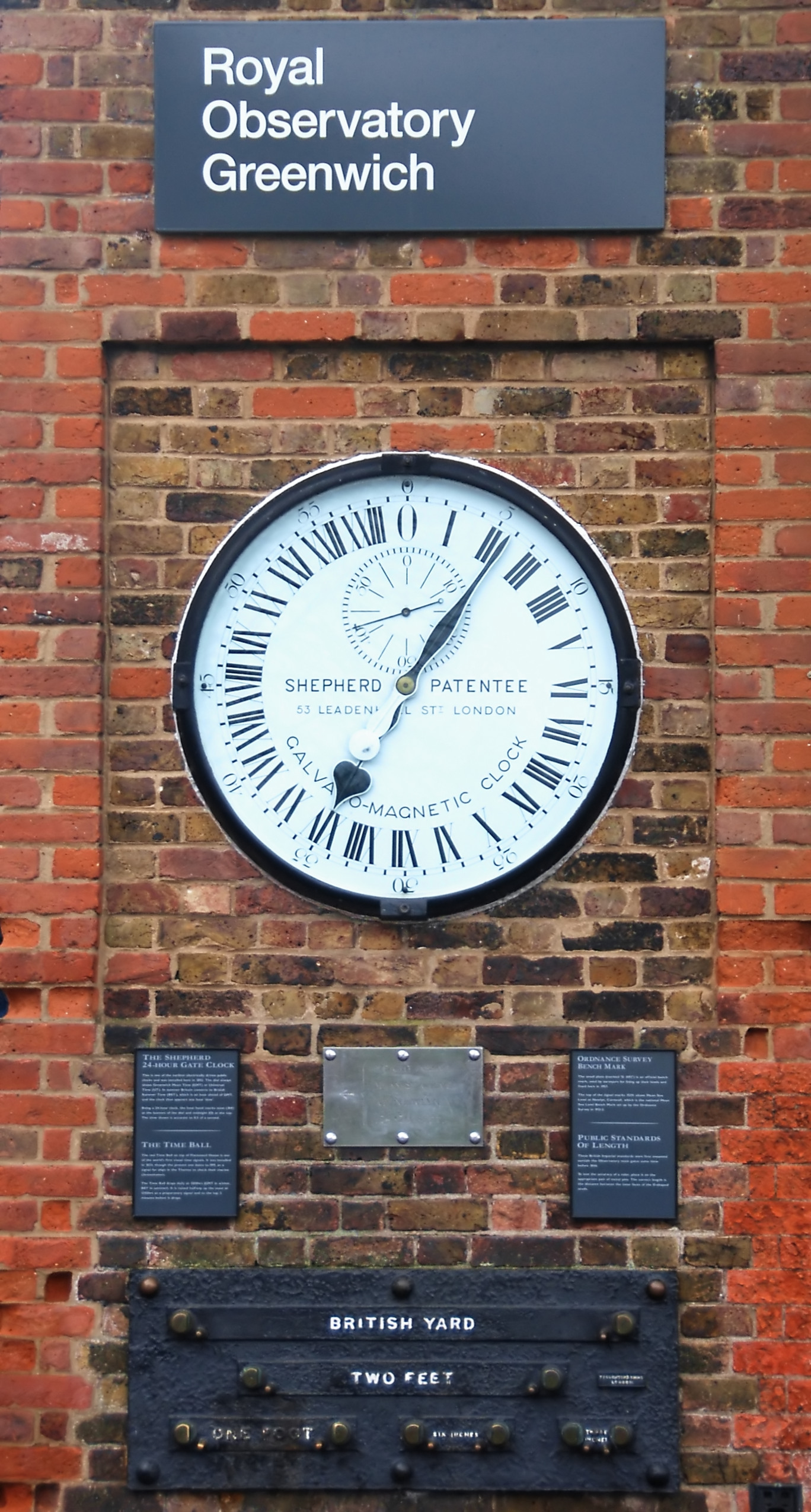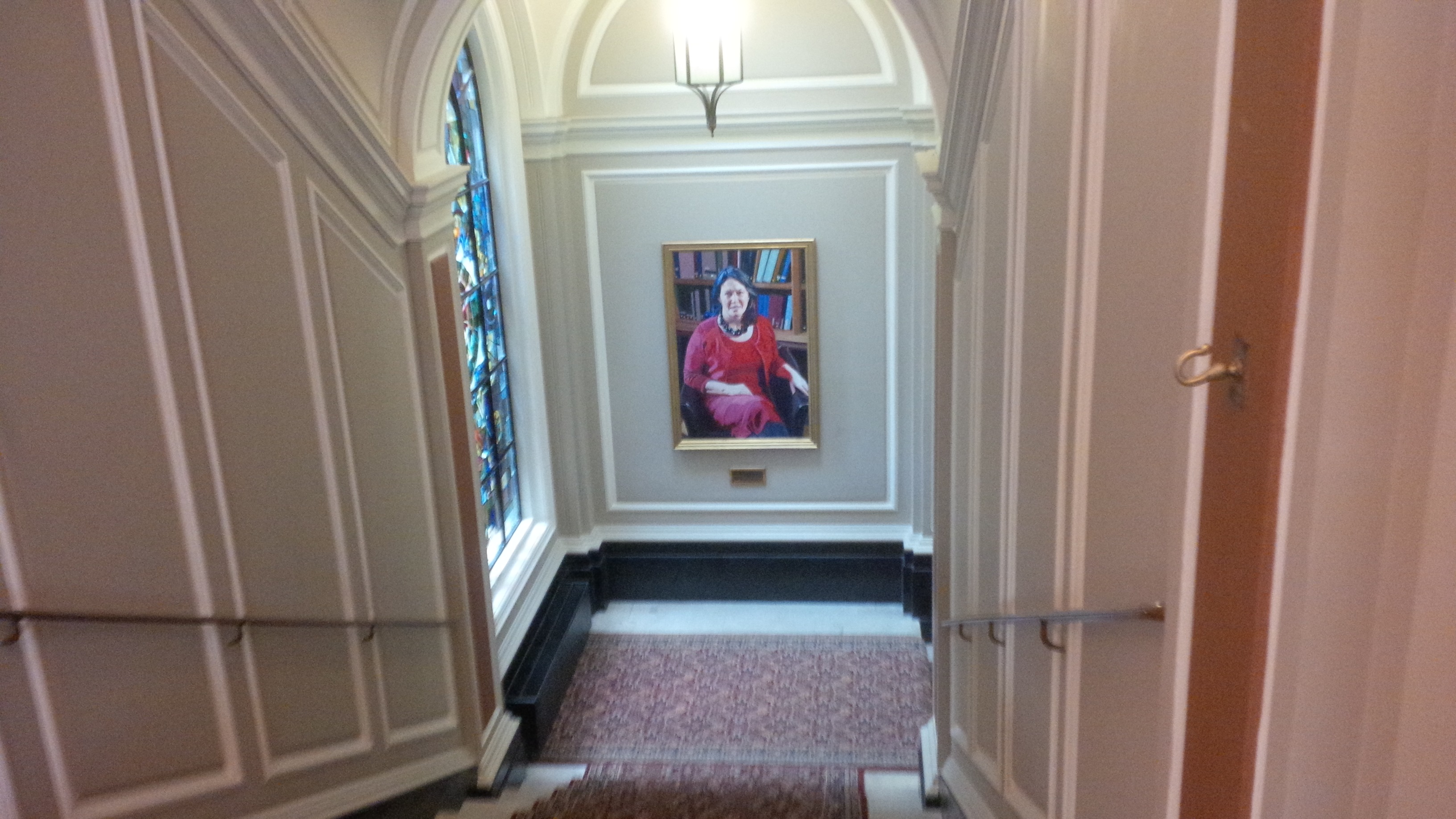|
Cincinnati City Hall
Cincinnati City Hall is the seat of the municipal government of Cincinnati, Ohio. Completed in 1893, the Richardson Romanesque structure was listed in the National Register of Historic Places on December 11, 1972. The building was designed by Samuel Hannaford at a cost of $1.61 million. The main building comprises four and a half stories with a nine-story clock tower. The building was constructed by the David Hummel company of Cincinnati using stone quarried in Wisconsin, Ohio, Missouri, and Indiana. Marble stairways and wainscoting originated in Italy and Tennessee, while granite columns were obtained from Vermont. Stained glass windows were installed which depict Cincinnatus and illustrate Cincinnati's early history. The first city hall was built on this site in 1852 and was demolished in 1888 to make way for the current structure. Construction costs for the building totaled $1.61 million of which $54,000 was paid to Samuel Hannaford as architect and construction superintendent ... [...More Info...] [...Related Items...] OR: [Wikipedia] [Google] [Baidu] |
Cincinnati, Ohio
Cincinnati ( ) is a city in the U.S. state of Ohio and the county seat of Hamilton County. Settled in 1788, the city is located at the northern side of the confluence of the Licking and Ohio rivers, the latter of which marks the state line with Kentucky. The city is the economic and cultural hub of the Cincinnati metropolitan area. With an estimated population of 2,256,884, it is Ohio's largest metropolitan area and the nation's 30th-largest, and with a city population of 309,317, Cincinnati is the third-largest city in Ohio and 64th in the United States. Throughout much of the 19th century, it was among the top 10 U.S. cities by population, surpassed only by New Orleans and the older, established settlements of the United States eastern seaboard, as well as being the sixth-most populous city from 1840 until 1860. As a river town crossroads at the junction of the North, South, East, and West, Cincinnati developed with fewer immigrants and less influence from Europ ... [...More Info...] [...Related Items...] OR: [Wikipedia] [Google] [Baidu] |
Forced Perspective
Forced perspective is a technique that employs optical illusion to make an object appear farther away, closer, larger or smaller than it actually is. It manipulates human visual perception through the use of scaled objects and the correlation between them and the vantage point of the spectator or camera. It has uses in photography, filmmaking and architecture. In filmmaking An example of forced perspective is a scene in an action movie in which dinosaurs are threatening the heroes. By placing a miniature model of a dinosaur close to the camera, the director may make the dinosaur look monstrously tall to the viewer, even though it is just closer to the camera. Forced perspective had been a feature of German silent films and ''Citizen Kane'' revived the practice. Movies, especially B-movies in the 1950s and 1960s, were produced on limited budgets and often featured forced perspective shots. Forced perspective can be made more believable when environmental conditions obscure the ... [...More Info...] [...Related Items...] OR: [Wikipedia] [Google] [Baidu] |
Cincinnati Local Historic Landmarks
Cincinnati ( ) is a city in the U.S. state of Ohio and the county seat of Hamilton County. Settled in 1788, the city is located at the northern side of the confluence of the Licking and Ohio rivers, the latter of which marks the state line with Kentucky. The city is the economic and cultural hub of the Cincinnati metropolitan area. With an estimated population of 2,256,884, it is Ohio's largest metropolitan area and the nation's 30th-largest, and with a city population of 309,317, Cincinnati is the third-largest city in Ohio and 64th in the United States. Throughout much of the 19th century, it was among the top 10 U.S. cities by population, surpassed only by New Orleans and the older, established settlements of the United States eastern seaboard, as well as being the sixth-most populous city from 1840 until 1860. As a rivertown crossroads at the junction of the North, South, East, and West, Cincinnati developed with fewer immigrants and less influence from Europe than ... [...More Info...] [...Related Items...] OR: [Wikipedia] [Google] [Baidu] |
City And Town Halls On The National Register Of Historic Places In Ohio
A city is a human settlement of notable size.Goodall, B. (1987) ''The Penguin Dictionary of Human Geography''. London: Penguin.Kuper, A. and Kuper, J., eds (1996) ''The Social Science Encyclopedia''. 2nd edition. London: Routledge. It can be defined as a permanent and densely settled place with administratively defined boundaries whose members work primarily on non-agricultural tasks. Cities generally have extensive systems for housing, transportation, sanitation, utilities, land use, production of goods, and communication. Their density facilitates interaction between people, government organisations and businesses, sometimes benefiting different parties in the process, such as improving efficiency of goods and service distribution. Historically, city-dwellers have been a small proportion of humanity overall, but following two centuries of unprecedented and rapid urbanization, more than half of the world population now lives in cities, which has had profound conseque ... [...More Info...] [...Related Items...] OR: [Wikipedia] [Google] [Baidu] |
Romanesque Revival Architecture In Ohio
Romanesque may refer to: In art and architecture *First Romanesque, or Lombard Romanesque architectural style *Pre-Romanesque art and architecture, a term used for the early phase of the style *Romanesque architecture, architecture of Europe which emerged in the late 10th century and lasted to the 13th century **Romanesque secular and domestic architecture **Brick Romanesque, North Germany and Baltic **Norman architecture, the traditional term for the style in English **Spanish Romanesque **Romanesque architecture in France *Romanesque art, the art of Western Europe from approximately AD 1000 to the 13th century or later *Romanesque Revival architecture, an architectural style which started in the mid-19th century, inspired by the original Romanesque architecture **Richardsonian Romanesque, a style of Romanesque Revival architecture named for an American architect Other uses * ''Romanesque'' (EP), EP by Japanese rock band Buck-Tick * "Romanesque" (song), a 2007 single by J ... [...More Info...] [...Related Items...] OR: [Wikipedia] [Google] [Baidu] |
Clock Towers In Ohio
A clock or a timepiece is a device used to measure and indicate time. The clock is one of the oldest human inventions, meeting the need to measure intervals of time shorter than the natural units such as the day, the lunar month and the year. Devices operating on several physical processes have been used over the millennia. Some predecessors to the modern clock may be considered as "clocks" that are based on movement in nature: A sundial shows the time by displaying the position of a shadow on a flat surface. There is a range of duration timers, a well-known example being the hourglass. Water clocks, along with the sundials, are possibly the oldest time-measuring instruments. A major advance occurred with the invention of the verge escapement, which made possible the first mechanical clocks around 1300 in Europe, which kept time with oscillating timekeepers like balance wheels., pp. 103–104., p. 31. Traditionally, in horology, the term ''clock'' was used for a ... [...More Info...] [...Related Items...] OR: [Wikipedia] [Google] [Baidu] |
Towers In Ohio
A tower is a tall structure, taller than it is wide, often by a significant factor. Towers are distinguished from masts by their lack of guy-wires and are therefore, along with tall buildings, self-supporting structures. Towers are specifically distinguished from buildings in that they are built not to be habitable but to serve other functions using the height of the tower. For example, the height of a clock tower improves the visibility of the clock, and the height of a tower in a fortified building such as a castle increases the visibility of the surroundings for defensive purposes. Towers may also be built for observation, leisure, or telecommunication purposes. A tower can stand alone or be supported by adjacent buildings, or it may be a feature on top of a larger structure or building. Etymology Old English ''torr'' is from Latin ''turris'' via Old French ''tor''. The Latin term together with Greek τύρσις was loaned from a pre-Indo-European Mediterranean languag ... [...More Info...] [...Related Items...] OR: [Wikipedia] [Google] [Baidu] |
National Register Of Historic Places In Cincinnati
National may refer to: Common uses * Nation or country ** Nationality – a ''national'' is a person who is subject to a nation, regardless of whether the person has full rights as a citizen Places in the United States * National, Maryland, census-designated place * National, Nevada, ghost town * National, Utah, ghost town * National, West Virginia, unincorporated community Commerce * National (brand), a brand name of electronic goods from Panasonic * National Benzole (or simply known as National), former petrol station chain in the UK, merged with BP * National Car Rental, an American rental car company * National Energy Systems, a former name of Eco Marine Power * National Entertainment Commission, a former name of the Media Rating Council * National Motor Vehicle Company, Indianapolis, Indiana, USA 1900-1924 * National Supermarkets, a defunct American grocery store chain * National String Instrument Corporation, a guitar company formed to manufacture the first reso ... [...More Info...] [...Related Items...] OR: [Wikipedia] [Google] [Baidu] |
Cincinnatus
Lucius Quinctius Cincinnatus ( – ) was a Roman patrician, statesman, and military leader of the early Roman Republic who became a legendary figure of Roman virtue—particularly civic virtue—by the time of the late Republic. Cincinnatus was an opponent of the rights of the plebeians (the common citizens) who fell into poverty because of his son Caeso Quinctius's violent opposition to their desire for a written code of equally enforced laws. Despite his relatively old age, he worked his own small farm until an invasion prompted his fellow citizens to call for his leadership. He came from his plough to assume complete control over the state but, upon achieving a swift victory in only 16 days, relinquished his power and its perquisites and returned to his farm. His success and immediate resignation of his near-absolute authority with the end of this crisis (traditionally dated to 458 BC) has often been cited as an example of outstanding leadership, service to the greate ... [...More Info...] [...Related Items...] OR: [Wikipedia] [Google] [Baidu] |
Ohio
Ohio () is a U.S. state, state in the Midwestern United States, Midwestern region of the United States. Of the List of states and territories of the United States, fifty U.S. states, it is the List of U.S. states and territories by area, 34th-largest by area, and with a population of nearly 11.8 million, is the List of U.S. states and territories by population, seventh-most populous and List of U.S. states and territories by population density, tenth-most densely populated. The state's capital and List of cities in Ohio, largest city is Columbus, Ohio, Columbus, with the Columbus metropolitan area, Ohio, Columbus metro area, Cincinnati metropolitan area, Greater Cincinnati, and Greater Cleveland being the List of metropolitan statistical areas, largest metropolitan areas. Ohio is bordered by Lake Erie to the north, Pennsylvania to the east, West Virginia to the southeast, Kentucky to the southwest, Indiana to the west, and Michigan to the northwest. Ohio is historically known as ... [...More Info...] [...Related Items...] OR: [Wikipedia] [Google] [Baidu] |
Wainscoting
Panelling (or paneling in the U.S.) is a millwork wall covering constructed from rigid or semi-rigid components. These are traditionally interlocking wood, but could be plastic or other materials. Panelling was developed in antiquity to make rooms in stone buildings more comfortable both by insulating the room from the stone, and reflecting radiant heat from wood fires, making heat more evenly distributed in the room. In more modern buildings, such panelling is often installed for decorative purposes. Panelling, such as wainscoting and boiserie in particular, may be extremely ornate and is particularly associated with 17th and 18th century interior design, Victorian architecture in Britain, and its international contemporaries. Wainscot panelling The term wainscot ( or ) originally applied to high quality riven oak boards. Wainscot oak came from large, slow-grown forest trees, and produced boards that were knot-free, low in tannin, light in weight, and easy to work w ... [...More Info...] [...Related Items...] OR: [Wikipedia] [Google] [Baidu] |





